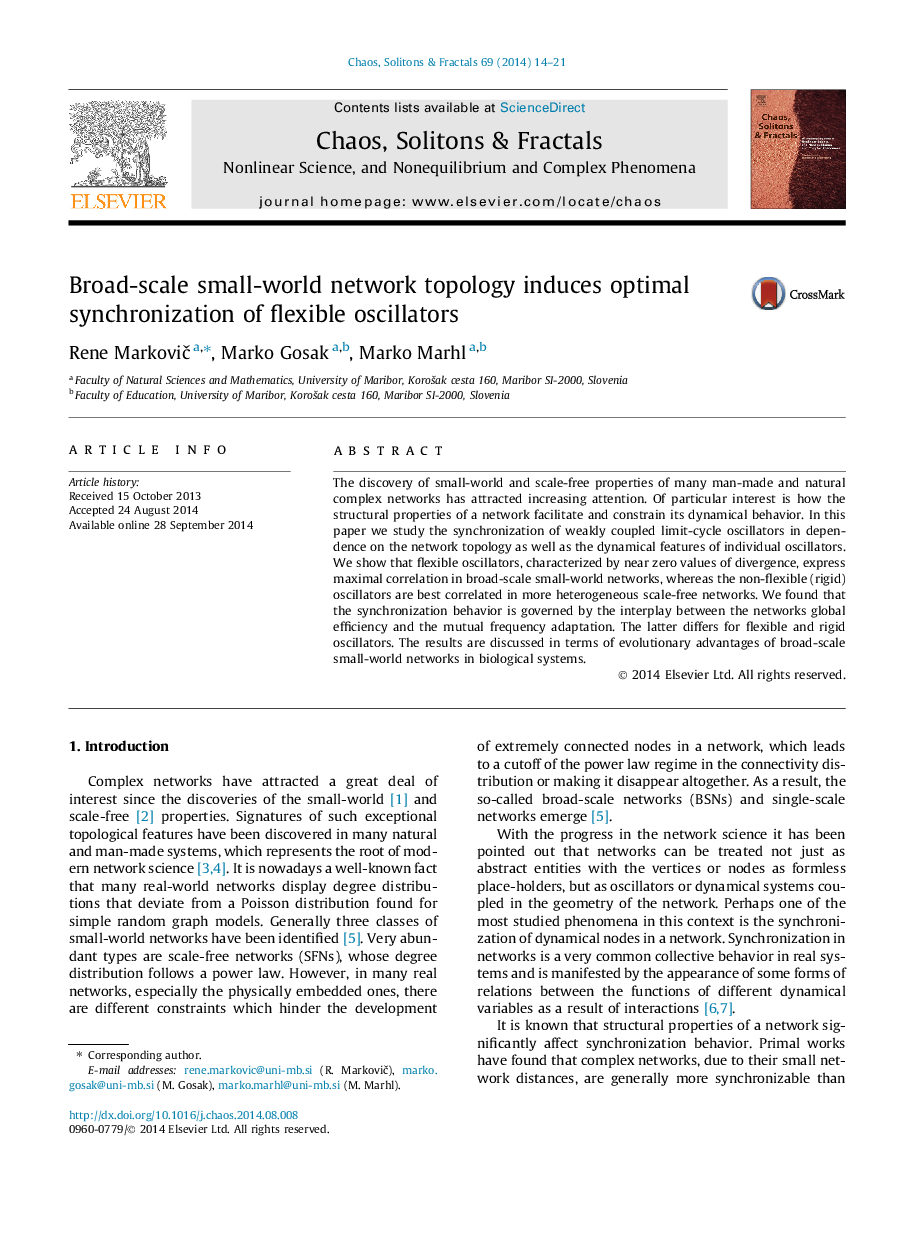| Article ID | Journal | Published Year | Pages | File Type |
|---|---|---|---|---|
| 1889024 | Chaos, Solitons & Fractals | 2014 | 8 Pages |
The discovery of small-world and scale-free properties of many man-made and natural complex networks has attracted increasing attention. Of particular interest is how the structural properties of a network facilitate and constrain its dynamical behavior. In this paper we study the synchronization of weakly coupled limit-cycle oscillators in dependence on the network topology as well as the dynamical features of individual oscillators. We show that flexible oscillators, characterized by near zero values of divergence, express maximal correlation in broad-scale small-world networks, whereas the non-flexible (rigid) oscillators are best correlated in more heterogeneous scale-free networks. We found that the synchronization behavior is governed by the interplay between the networks global efficiency and the mutual frequency adaptation. The latter differs for flexible and rigid oscillators. The results are discussed in terms of evolutionary advantages of broad-scale small-world networks in biological systems.
